 W
WThe Portuguese conquest of Goa occurred when the governor of Portuguese India Afonso de Albuquerque captured the city in 1510. Goa was not among the cities Albuquerque had received orders to conquer: he had only been ordered by the Portuguese king to capture Hormuz, Aden, and Malacca.
 W
WAfonso de Albuquerque, Duke of Goa was a Portuguese general, admiral, and statesman. He served as Governor of Portuguese India from 1509 to 1515, during which he expanded Portuguese influence across the Indian Ocean and built a reputation as a fierce and skilled military commander.
 W
WAntonio Francisco Xavier Alvares was initially a priest in the Roman Catholic Church in Goa. He joined the Malankara Orthodox Syrian Church and was elevated to Metropolitan of Goa, Ceylon and Greater India in the Malankara Orthodox Syrian Church.
 W
WThe Annexation of Goa was the process in which the Republic of India annexed the former Portuguese Indian territories of Goa, Daman and Diu, starting with the armed action carried out by the Indian Armed Forces in December 1961. In India, this action is referred to as the "Liberation of Goa". In Portugal, it is referred to as the "Invasion of Goa". Following the end of Portuguese rule in 1961, Goa was placed under military administration headed by Kunhiraman Palat Candeth as Lieutenant Governor. On 8 June 1962, military rule was replaced by civilian government when the Lieutenant Governor nominated an informal Consultative Council of 29 nominated members to assist him in the administration of the territory.
 W
WArch of Viceroy, also known as Viceroy's Arch, was erected in 1599 in Goa, India, by Viceroy Francisco da Gama, the grandson of Vasco da Gama. The arch was restored in 1954 after it faced a collapse. It is an ASI protected Monument of National Importance in Goa.
 W
WThe Basilica of Bom Jesus is a Roman Catholic basilica located in Goa, India, and is part of the Churches and convents of Goa UNESCO World Heritage Site. The basilica is located in Old Goa, former capital of Portuguese India, and holds the mortal remains of St. Francis Xavier.
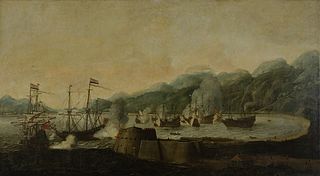 W
WThe Battle of Goa refers to a series of naval engagements between the Portuguese Armada and the Dutch East India Company fleets attempting to blockade and conquer the city of Goa. In 1638, forces commanded by the Viceroy of Portuguese India, D. Pedro da Silva and later António Teles de Meneses fought off a large Dutch fleet sent to block the port colony of Goa, commanded by Admiral Adam Westerwolt, who was badly defeated at this encounter. The next year 1639, the Dutch Admiral Cornelis Simonsz van der Veere would conduct a new raid on Goa's port.
 W
WLuís de Menezes Bragança, alternatively spelled as Luís de Menezes Braganza, was a prominent Indian journalist, writer, politician and anti-colonial activist from Goa. He was one of the few Goan aristocrats who actively opposed the Portuguese colonisation of Goa. During his lifetime, Menezes Bragança was widely hailed around the Lusosphere as "O Maior de todos" and in the Indian mainland as "The Tilak of Goa".
 W
WThe Chapel of Our Lady of the Mount is a Roman Catholic church dedicated to the Virgin Mary in Old Goa, India. It is one of the oldest churches in the city and was built between 1510 and 1519. The construction of the church was ordered by Afonso de Albuquerque, the governor of Portuguese India, immediately after the Portuguese conquest of Goa in 1510. The chapel was completed in 1519.
 W
WThe Chapel of St. Catherine is a UNESCO World Heritage Site located in Old Goa in the same compound as Se Cathedral and the Church and Convent of St. Francis of Assisi. It was built in 1510 in the Baroque architectural style, and has a brown and white facade. It faces the Mandovi River and is maintained by the Archaeological Survey of India along with the other monuments in the compound. The chapel is not functional.
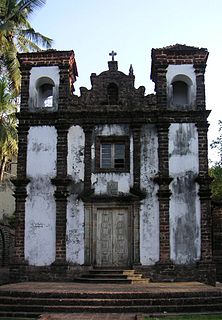 W
WThe indigenous population of the erstwhile Portuguese colony of Goa underwent a large-scale conversion from Hinduism to Christianity after its conquest and occupation by the Portuguese Empire, led by admiral Afonso de Albuquerque in 1510. After conversion to Roman Catholicism, they were granted Portuguese citizenship. Almost all the present-day Goan Catholics are descendants of these local converts to the religion. They constitute the largest Christian community in Goa and account for 25 per cent of the total Catholic population in India. The Mangalorean Catholic and Karwari Catholic communities of the Indian state of Karnataka are also largely descended from these Goan converts. East Indian Catholics of northern Konkan districts and Christians of Damaon also have some Portuguese Goan ancestry and interaction, East Indians were formerly Portuguese overseas citizens until when Bombay was handed over as a royal dowry to the British East India Company by the Portuguese Viceroyalty.
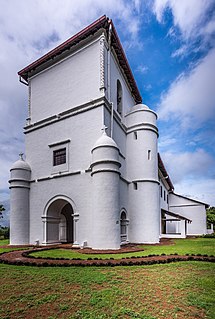 W
WThe Church of Our Lady of the Rosary is a Catholic church built between 1544 and 1547, in Old Goa, State of Goa, India. This church is part of the collection belonging to the World Heritage Site of churches and convents of Goa.
 W
WThe Church of St. Anne is a church and religious monument located in the Santana district of Old Goa, in Goa province, India. The 17th century church is a major example of the colonial Portuguese Baroque architecture built in Portuguese India.
 W
WThe Church of St. Francis of Assisi was built in 1661 by the Portuguese in the Portuguese Viceroyalty of India. The Church of St. Francis of Assisi, together with a convent, was established by eight Portuguese Franciscan friars who landed in Goa in 1517.
 W
WChurches and convents of Old Goa is the name given by UNESCO to a set of religious monuments located in Goa Velha, in the state of Goa, India, which were declared a World Heritage Site in 1986.
 W
WThe Cuncolim revolt involved the massacre of Christian priests and civilians by Kshatriyas in Cuncolim of Portuguese Goa on Monday, 25 July 1583, as a protest against attempts by the colonial Portuguese administration.
 W
WFort Aguada is a well-preserved seventeenth-century Portuguese fort, along with a lighthouse, standing in Goa, India, on Sinquerim Beach, overlooking the Arabian Sea. It is an ASI protected Monument of National Importance in Goa.
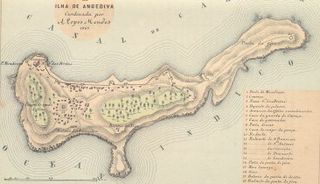 W
WFort Anjediva, built on the Anjadip Island, off the coast of the Indian state of Karnataka but under the administrative jurisdiction of the Indian state of Goa, was once under Portuguese rule. The island of Anjadip has an area of 1.5 square kilometres (0.58 sq mi).
 W
WFort Tiracol, sometimes known as Terekhol Fort, is a fort in Goa, but geographically in Maharashtra, India. Located on the northern tip of Goa at the mouth of the Tiracol River, Fort Tiracol is reached by a ferry from Querim, 42 km North of Panaji. The name probably originated from the Marathi tir-khol meaning "steep river-bank".
 W
WVasco da Gama, 1st Count of Vidigueira, was a Portuguese explorer and the first European to reach India by sea.
 W
WA Goa stone or Lapis de Goa was a man-made bezoar that was considered to have medicinal and talismanic properties and were manufactured from Goa, India and exported to apothecaries in Europe from the mid-16th to 18th century. Goa stones were manufactured by Jesuits in the late seventeenth century in Goa because naturally occurring bezoars were scarce. Their inventor was the Florentine lay brother Gaspar Antonio, and a Jesuit monopoly was confirmed by the Portuguese on March 6, 1691. They were created by combining organic and inorganic materials including hair, fossil shark teeth, shells, tusks, resin, and crushed gems, then shaping the materials into a ball and covering it with gilt. Like bezoar stones, Goa stones were thought to prevent disease and cure poisoning. They could be administered by shaving off small pieces into a drinkable beverage like water, tea, or wine.
 W
WGoa Velha is a census town in Ilhas, Goa. It should not be confused with the World Heritage Site Velha Goa. St. Andrew's is its parish church. It is well known for its yearly 'procession of saints'
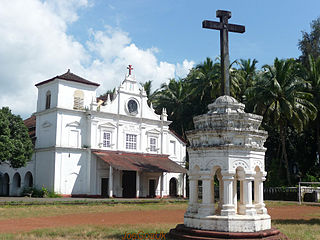 W
WThe Igreja de Nossa Senhora das Neves is a historic church in the village of Rachol, on the banks of the river Zuari, in Goa, India. The church was built in the 1560s. It is located close to the notable Rachol Seminary. There is a church of the same name in the neighbouring village of Raia.
 W
WArchbishop Aleixo de Menezes or Alexeu de Jesu de Meneses was Catholic Archbishop of Goa, Archbishop of Braga, Portugal, and Viceroy of Portugal during the Philippine Dynasty.
 W
WThe Novas Conquistas or "New Conquests" are a group of seven concelhos of Goa in the colonial Portuguese India era. They were added onto Goa in the eighteenth century AD, a comparatively later date than the original three concelhos that make up the Velhas Conquistas or "Old Conquests".
 W
WOld Goa is a historical city situated on the southern banks of the Mandovi River in the Ilhas sub-district of North Goa in the Indian state of Goa.
 W
WThe Goa Inquisition was an extension of the Portuguese Inquisition in colonial-era Portuguese India. The Inquisition was established to enforce Catholic orthodoxy in the Indian colonies of the Portuguese Empire. The Inquisition was instituted to counter the New Christians who were accused of "crypto-Hinduism" and the Old Christian Nasranis for "Judaising", by the colonial era Inquisition in Portuguese India. It was established in 1560, briefly suppressed from 1774 to 1778, continued thereafter until finally abolished in 1820. The Inquisition punished those who had converted to Catholicism but were suspected by Jesuit clergy of practising their previous religion in secret. Predominantly, those targeted were accused of Crypto-Hinduism. A few dozen criminally-charged natives were imprisoned, publicly flogged and, dependent on the criminal charge, sentenced to death. The Inquisitors also seized and burnt any books written in Sanskrit, Dutch, English, or Konkani, on the suspicions that they contain deviationist or Protestant material.
 W
WJoão Crisóstomo de Amorim Pessoa was a Portuguese bishop. He was Bishop of Santiago de Cabo Verde and archbishop of Goa and Braga.
 W
WThe Ponda Fort is located in Ponda, in the state of Goa on the west coast of India.
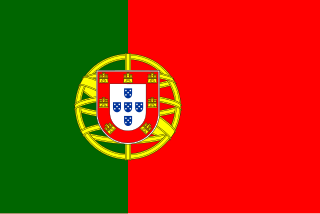 W
WThe State of India, also referred as the Portuguese State of India or simply Portuguese India, was a colonial state of the Portuguese Empire founded six years after the discovery of a sea route to the Indian Subcontinent by the Kingdom of Portugal. The capital of Portuguese India served as the governing centre of a string of Portuguese fortresses and settlements scattered along the Indian Ocean.
 W
WThe Rachol Seminary, also known today as the Patriarchal Seminary of Rachol, is the diocesan major seminary of the Primatial Catholic Archdiocese of Goa and Daman.
 W
WThe Church of St. Clara is also known as the St. Clara of Assisi Chapel is a Roman Catholic church built in 1768 in Assonora, Goa. The Religious Order based in the Parish of St. Clare Church at Assonora, Goa is the Poor Sisters of Our Lady (PSOL), based at Infant Jesus of Prague Convent, Auchit Waddo, Assonora, Goa.
 W
WSt. Paul's College was a Jesuit school, and later college, founded circa 1542 by saint Francis Xavier, at Old Goa. It was once the main Jesuit institution in the whole of Asia. It housed the first printing press in India, having published the first books in 1556. The original building, however, was abandoned progressively after the outbreak of plague in 1578, and went into disuse as the college moved to new building known as the New College of Saint Paul.
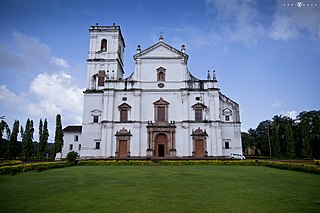 W
WThe Sé Catedral de Santa Catarina, known as Se Cathedral, is the cathedral of the Latin Rite Roman Catholic Archdiocese of Goa and Daman and the seat of the Patriarch of the East Indies. It is located in Old Goa, India.
 W
WThe Society of the Missionaries of St. Francis Xavier, Pilar (S.F.X.), commonly referred to as the Society of Pilar or the Pilar Fathers or the Agnel Ashram Fathers, is a Roman Catholic organization of priests and brothers. In the official Vatican-approved canonical language it is called a society of apostolic life.
 W
WAs Velhas Conquistas or "the Old Conquests" are a grouping of the areas in Goa which were incorporated into Portuguese India early in the sixteenth century AD; as these areas underwent urbanisation they were elevated to concelhos (municipalities) by the Portuguese Viceroyalty that ruled from the administrative centre at Velha Goa. Having been acquired in AD 1510 or within the next few years, they formed the oldest parts and the core of Portuguese Goa and remain as the central theme in the history geography and culture of present-day Goa and Damaon. The Novas Conquistas or New Conquests formed the outer periphery of Goa bordering the erstwhile British India. Novas Conquistas of present-day Goa shares borders with the Konkan province of Maharashtra, and also with Belgaum and North Canara districts of Carnatica.